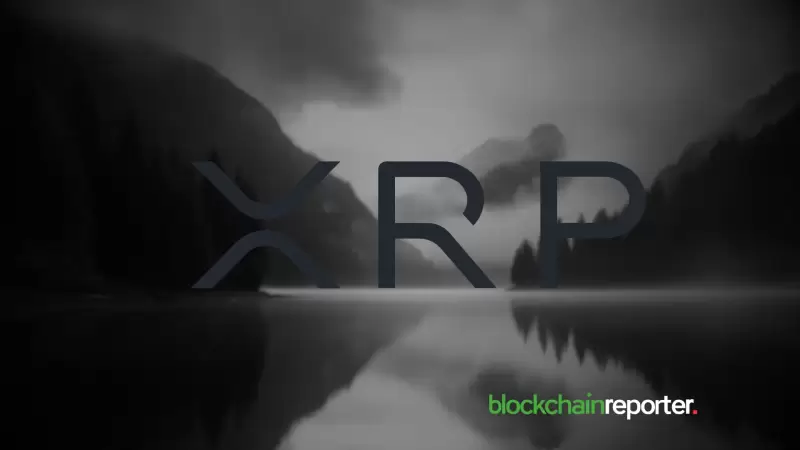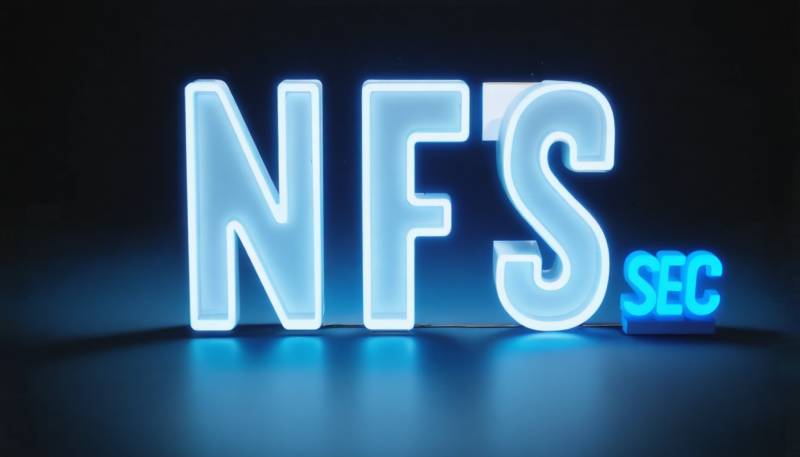 |
|
 |
|
 |
|
 |
|
 |
|
 |
|
 |
|
 |
|
 |
|
 |
|
 |
|
 |
|
 |
|
 |
|
 |
|
在加密貸款方面,流行項目採用多種模型來促進貸款,每種貸款對風險和回報都有明顯的影響。

Crypto lending has emerged as a cornerstone of decentralized finance (DeFi), promising to democratize access to capital and yield opportunities beyond the constraints of traditional banking. However, striking an optimal balance between risk and reward for lenders and borrowers remains a critical question. While some protocols excel at aligning these dynamics, others falter, exposing participants to disproportionate risk or diluted returns.
加密貸款已成為分散財務(DEFI)的基石,他們承諾將獲得資本的機會民主化,並產生超出傳統銀行業務限制的機會。但是,對貸方和借款人的風險和回報之間達到最佳平衡仍然是一個關鍵問題。儘管某些協議在使這些動態保持一致方面表現出色,但其他協議則步履蹣跚,使參與者面臨不成比例的風險或稀釋回報。
Lending mechanisms and yields vary greatly across the industry. A closer examination of one up-and-coming protocol, Silo Finance, reveals how crypto lending can effectively calibrate risk just as precisely as measuring yield.
整個行業的貸款機制和產量差異很大。對一項新興方案的仔細檢查,Silo Finance揭示了加密貸款如何有效地校準風險與測量產量一樣精確。
A Spectrum of Risk and Reward in Crypto Lending
加密貸款中的風險和回報範圍
Popular crypto lending projects employ a range of models to facilitate loans, each with distinct implications for risk and return. Centralized platforms like BlockFi have historically offered fixed yields, typically in the range of 5-8% annually, by pooling assets and lending to institutional borrowers. However, their collapse in 2022 brought attention to counterparty risks that went largely undetected.
流行的加密貸款項目採用了一系列模型來促進貸款,每種貸款對風險和回報都有明顯的影響。像Blockfi這樣的集中式平台歷來提供固定的收益率,通常每年通過將資產和貸款匯總給機構借款人,範圍為5-8%。但是,他們在2022年的崩潰引起了人們對交易對手風險的關注,這些風險在很大程度上未被發現。
On the other hand, decentralized protocols like Aave and Compound, managing over $10 billion and $3 billion in total value locked (TVL) respectively, utilize shared pools where lenders can deposit assets like ETH or USDC to earn variable interest (e.g., 2-5% on stables) while borrowers overcollateralize their loans. These protocols distribute risk across all assets in their pools, meaning a single token’s failure, like the 2021 CREAM exploit that resulted in losses of over $130 million, can ripple through the entire system.
另一方面,分散的協議(例如AAVE和COMPOUND)分別管理超過100億美元和30億美元的總價值鎖定(TVL),利用共享池,貸方可以將ETH或USDC等資產存入可變利息(例如,2-5-55-5-55-5-55-5-5-5-5-5-5-5-5-5馬s上的%),借款人過度貸款。這些協議在其池中的所有資產上分配了風險,這意味著單個令牌的失敗,例如2021奶油漏洞,導致超過1.3億美元的損失,可能會在整個系統中波動。
In contrast, newer entrants like Silo Finance are introducing a different approach by isolating risk to individual markets, offering a sharper risk-reward alignment that legacy models struggle to match.
相比之下,諸如Silo Finance之類的新進入者通過將風險隔離到各個市場,提供了一種不同的方法,提供了傳統模型難以匹配的尖銳風險獎勵的一致性。
Recreating TradFi’s Flaws with DeFi
用defi重新創建tradfi的缺陷
Traditional financial markets, such as the bond or credit markets, often embed a broad spectrum of risk that misaligns rewards for participants. For instance, investment-grade bonds yield around 3-5%, while junk bonds push towards 7-10%, reflecting a sliding scale of credit risk.
傳統的金融市場(例如債券或信貸市場)經常嵌入廣泛的風險,這會使參與者的獎勵錯過。例如,投資級債券的收益率約為3-5%,而垃圾債券將7-10%的債券推向了7-10%,反映了信用風險的滑動規模。
However, this spread frequently overcompensates low-risk lenders, say in AAA-rated securities, while exposing high-risk investors to the possibility of defaults without a commensurate upside. The 2008 financial crisis highlighted this inefficiency, with mortgage-backed securities bundling diverse risks that left some investors with meager returns and others facing catastrophic losses.
但是,這種傳播經常在AAA評級的證券中說,這一傳播經常使低風險貸方過於補償,同時使高風險投資者可能沒有相應的上漲空間違約。 2008年的金融危機強調了這一效率低下,抵押支持的證券捆綁了各種風險,這使一些投資者獲得了微薄的回報,而其他投資者則面臨災難性的損失。
Crypto’s shared-pool models, as popularized by leading DeFi protocols, mirror this flaw to some extent. They pool volatile tokens, such as altcoins with an annualized volatility of over 50%, together with stables, ultimately diluting yields for conservative lenders and amplifying risk for all when volatility strikes.
由領先的DEFI協議普及的Crypto的共享模型在某種程度上反映了這一缺陷。他們將揮發性令牌匯總,例如年度波動率超過50%的山寨幣,以及馬s,最終稀釋保守貸方的產量,並在波動率罷工時對所有人的風險擴大。
Redefining Risk-Defined Yield
重新定義風險定義的收益率
But not all DeFi lending protocols are intent on replicating TradFi on-chain, achilles’ heels and all. Silo Finance provides a case study in the ability for DeFi to present a compelling alternative to deliver yield without opaquely ramping up the systemic risk. The secret sauce lies in the creation of isolated lending markets.
但是,並非所有的Defi貸款方案都打算複製Tradfi鏈上,阿喀琉斯的高跟鞋等。 Silo Finance提供了一個案例研究,以使Defi提出令人信服的替代方案,以實現產量,而無需不斷增加系統性風險。秘密調味料在於建立孤立的貸款市場。
Unlike Aave’s pooled approach, Silo creates dual-asset pools, such as ETH-USDC, where lenders only bear the risk of their chosen market. Silo's $270M TVL spans 75 markets across five chains, with $210M borrowed and no solvency issues since inception. This isolation ensures that a hack or insolvency in one market, say a volatile Curve LP token pool, doesn’t threaten others. It’s a concept similar to the isolated margin mechanism that ensures perps traders don’t lose their entire account balance if a trade goes south.
與AAVE的合併方法不同,Silo創建了雙資產池,例如ETH-USDC,貸方只承擔其選擇市場的風險。 Silo的2.7億美元TVL跨越了五個連鎖店的75個市場,自成立以來,借入了2.1億美元,沒有償付能力問題。這種隔離確保了一個市場上的黑客攻擊或破產,例如揮發性曲線LP令牌池,不會威脅其他市場。這是一個類似於孤立的保證金機制的概念,它可以確保PERPS交易者在南方交易時不會失去整個帳戶餘額。
Silo v2, rolling out on Sonic, introduces programmable markets that can optimize idle capital by deploying it to DEXs for additional yield, all while maintaining risk segregation. This flexibility has driven Silo’s total revenue to $2.5 million, with nearly $300k being distributed to $SILO token holders.
Silo V2在Sonic上推出,引入了可編程市場,可以通過將其部署到DEX以獲得額外收益率來優化閒置資本,同時保持風險隔離。這種靈活性使Silo的總收入達到了250萬美元,將近30萬美元分配給了$ Silo代幣持有人。
DeFi Lending Done Differently
Defi貸款做的不同
Silo's edge lies in its granular control over both risk and reward. Traditional DeFi platforms like Compound offer uniform interest rates - say, 3% on USDC - irrespective of the underlying token's volatility, ultimately underpaying lenders for riskier assets. In contrast, Silo's modular interest rates adjust per market, compensating lenders more - as much as 10-15% on volatile tokens - where the risk is higher.
筒倉的邊緣在於其對風險和回報的顆粒狀控制。傳統的Defi平台(例如Compound)提供統一的利率 - 例如,USDC的3% - 無論基礎代幣的波動率,最終以較風險的資產為基礎。相比之下,筒倉的模塊化利率調整了每個市場,在揮發性代幣中補償貸方的補償更多 - 在風險較高的情況下。
While shared-pool protocols are vulnerable to weak collateral, Silo sidesteps this by letting bridge asset depositors, such as ETH lenders, choose their exposure, avoiding forced risk-sharing. For borrowers, overcollateralization remains within the normal DeFi range of 150-200%. However, Silo's permissionless markets for any token, including niche assets
儘管共享池協議很容易受到弱抵押品的影響,但Silo通過讓橋樑資產存款人(例如ETH Lenders)選擇其曝光,從而避免使用強迫風險分擔。對於借款人,過度補償仍保持在正常的DEFI範圍內150-200%。但是,筒倉的任何代幣的無許可市場,包括利基資產
免責聲明:info@kdj.com
所提供的資訊並非交易建議。 kDJ.com對任何基於本文提供的資訊進行的投資不承擔任何責任。加密貨幣波動性較大,建議您充分研究後謹慎投資!
如果您認為本網站使用的內容侵犯了您的版權,請立即聯絡我們(info@kdj.com),我們將及時刪除。
-

- XRP價格預測:分析和預測2025年2月23日
- 2025-02-24 08:30:27
- XRP當前的市場狀況,技術指標和2025年2月23日的價格預測的全面分析。
-

- Qubetics($ TICS)評論:帶有改變遊戲錢包的最終Defi Powerhouse
- 2025-02-24 08:30:27
- 加密行業正處於轉折點,隨著機構採用,監管發展和技術進步的增加,塑造了空間。
-

-

- 碼頭:終極區塊鏈橋
- 2025-02-24 08:30:27
- Qubetics不僅是另一個尋找炒作的區塊鏈項目。它正在解決該行業中一些最大的頭痛。
-

- 冷軟件(冷):Web3 Powerhouse將投資者遠離Bera
- 2025-02-24 08:30:27
- Berachain(Bera)的主網發射充滿了期望,但其動蕩的首次亮相引起了投資者的關注。
-

- XRP的流星崛起:$ 44可以觸及嗎?
- 2025-02-24 08:30:27
- XRP見證了突破性的突破,以其潛在的軌跡吸引了加密貨幣市場。在關鍵的白色渠道上方交易
-

-

-

- Pi的夢想
- 2025-02-24 08:30:27
- 那些勤奮地檢查以改變生活的夢想的人。這些天關於它們的故事一直很熱。


























































